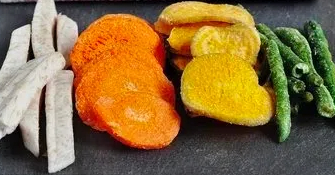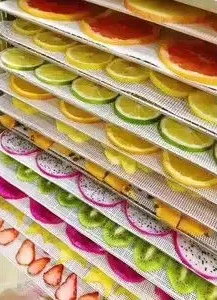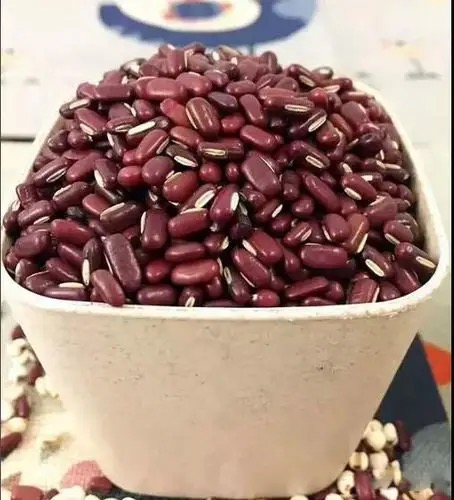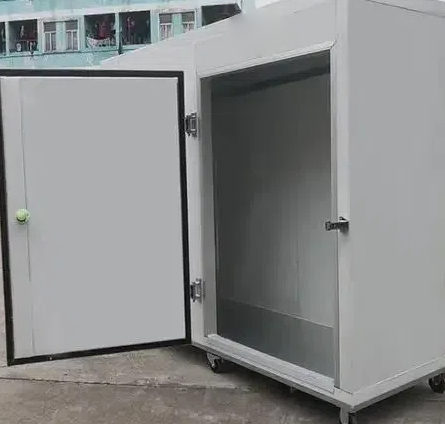
Content Menu
● Introduction
● What is a Heat Pump Dryer?
● Advantages of Using Heat Pump Dryers for Food
● Applications of Heat Pump Dryers in the Food Industry
● How to Choose the Right Heat Pump Dryer
● Maintenance and Care for Heat Pump Dryers
● Future Trends in Food Drying Technology
● Conclusion
● Frequently Asked Questions
>> 1. What types of food can be dried using heat pump dryers?
>> 2. How does a heat pump dryer differ from a conventional dryer?
>> 3. What are the energy savings associated with heat pump dryers?
>> 4. Can heat pump dryers be used for home food drying?
>> 5. What maintenance is required for heat pump dryers?
Introduction
Food preservation is a critical aspect of the food industry, ensuring that products remain safe, nutritious, and flavorful over time. Among various preservation methods, drying stands out as one of the oldest and most effective techniques. In recent years, heat pump dryers have gained popularity for their efficiency and versatility in food drying applications. This article explores the significance of heat pump dryers in the food industry, their advantages, and how they can revolutionize food preservation.

What is a Heat Pump Dryer?
A heat pump dryer is an advanced drying system that utilizes heat pump technology to remove moisture from food products. Unlike traditional dryers that rely on high temperatures and external venting, heat pump dryers operate by recycling heat within a closed system. This process not only conserves energy but also allows for lower drying temperatures, which helps preserve the quality of the food.
The working principle of a heat pump dryer involves three main stages: evaporation, condensation, and heat exchange. Initially, warm air is circulated through the drying chamber, where it absorbs moisture from the food. The moisture-laden air is then passed through a condenser, where it cools down, causing the moisture to condense and be collected. The dry air is reheated and recirculated, creating a continuous drying cycle.
Advantages of Using Heat Pump Dryers for Food
Heat pump dryers offer numerous advantages that make them an ideal choice for food drying:
1. Energy Efficiency: One of the most significant benefits of heat pump dryers is their energy efficiency. By recycling heat, these dryers consume significantly less energy compared to traditional drying methods, leading to lower operational costs.
2. Nutritional Preservation: The lower drying temperatures used in heat pump dryers help retain the nutritional value and flavor of the food. This is particularly important for fruits and vegetables, where high temperatures can lead to nutrient loss.
3. Versatility: Heat pump dryers can be used to dry a wide variety of food products, including fruits, vegetables, meats, and herbs. This versatility makes them suitable for both commercial and home applications.
4. Environmentally Friendly: With their reduced energy consumption and lower greenhouse gas emissions, heat pump dryers contribute to more sustainable food processing practices.

Applications of Heat Pump Dryers in the Food Industry
Heat pump dryers are widely used in the food industry for various applications. They are particularly beneficial in commercial food processing, where large quantities of food need to be dried efficiently. Common applications include:
1. Fruit Drying: Heat pump dryers are ideal for drying fruits such as apples, bananas, and berries, preserving their natural sweetness and flavor.
2. Vegetable Drying: Vegetables like carrots, peppers, and tomatoes can be dried effectively, extending their shelf life and making them suitable for snacks and soups.
3. Meat Drying: Heat pump technology is also used in drying meats, such as jerky, ensuring that the final product is safe and flavorful.
4. Herb Drying: Culinary herbs can be dried without losing their essential oils and flavors, making them perfect for seasoning and cooking.
How to Choose the Right Heat Pump Dryer
When selecting a heat pump dryer, several factors should be considered to ensure it meets your specific needs:
1. Capacity: Determine the volume of food you plan to dry. Heat pump dryers come in various sizes, from small home units to large industrial models.
2. Energy Rating: Look for models with high energy efficiency ratings to maximize savings on electricity bills.
3. Features: Consider additional features such as programmable settings, humidity control, and ease of cleaning, which can enhance the drying process.
Maintenance and Care for Heat Pump Dryers
Proper maintenance is essential for ensuring the longevity and efficiency of heat pump dryers. Here are some tips:
1. Regular Cleaning: Clean the filters and drying chamber regularly to prevent blockages and maintain airflow.
2. Check for Blockages: Inspect the air ducts and vents for any obstructions that could hinder performance.
3. Drainage Maintenance: Ensure that the water drainage system is functioning correctly to prevent overflow and maintain optimal drying conditions.
Future Trends in Food Drying Technology
The food drying industry is evolving, with innovations in heat pump technology leading the way. Future trends may include:
1. Smart Technology: Integration of IoT devices for remote monitoring and control of drying processes.
2. Sustainable Practices: Increased focus on environmentally friendly drying methods that minimize energy consumption and waste.
3. Customization: Development of customizable drying solutions tailored to specific food types and processing requirements.
Conclusion
Heat pump dryers represent a significant advancement in food preservation technology. Their energy efficiency, ability to retain nutritional value, and versatility make them an excellent choice for both commercial and home food drying applications. As the demand for sustainable food processing solutions continues to grow, heat pump dryers are poised to play a crucial role in the future of the food industry.

Frequently Asked Questions
1. What types of food can be dried using heat pump dryers?
Heat pump dryers can effectively dry fruits, vegetables, meats, and herbs, preserving their nutritional value.
2. How does a heat pump dryer differ from a conventional dryer?
Unlike conventional dryers, heat pump dryers recycle heat and do not require external venting, making them more energy-efficient.
3. What are the energy savings associated with heat pump dryers?
Heat pump dryers can save up to 50% more energy compared to traditional dryers due to their efficient heat recycling process.
4. Can heat pump dryers be used for home food drying?
Yes, heat pump dryers are suitable for both commercial and home use, providing flexibility for various drying needs.
5. What maintenance is required for heat pump dryers?
Regular cleaning of filters, checking for blockages, and ensuring proper drainage are essential for optimal performance.












